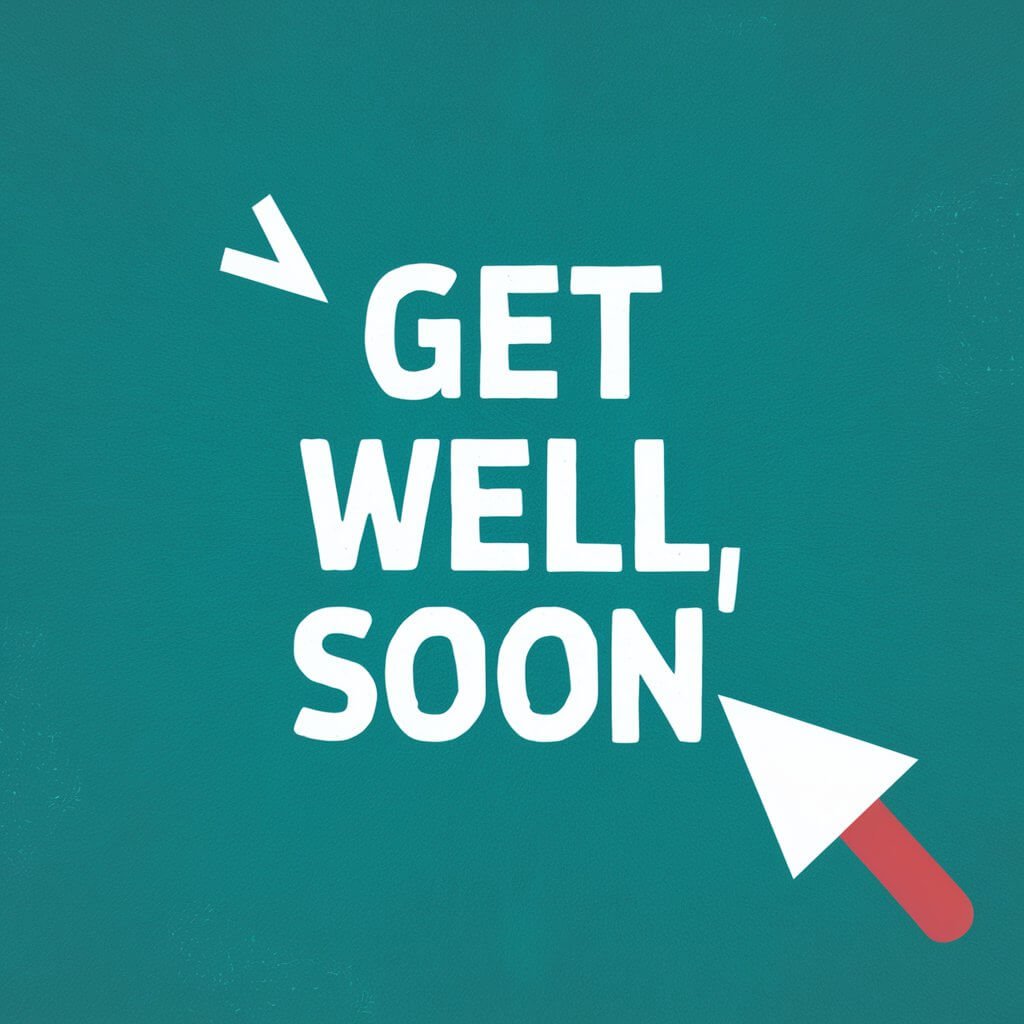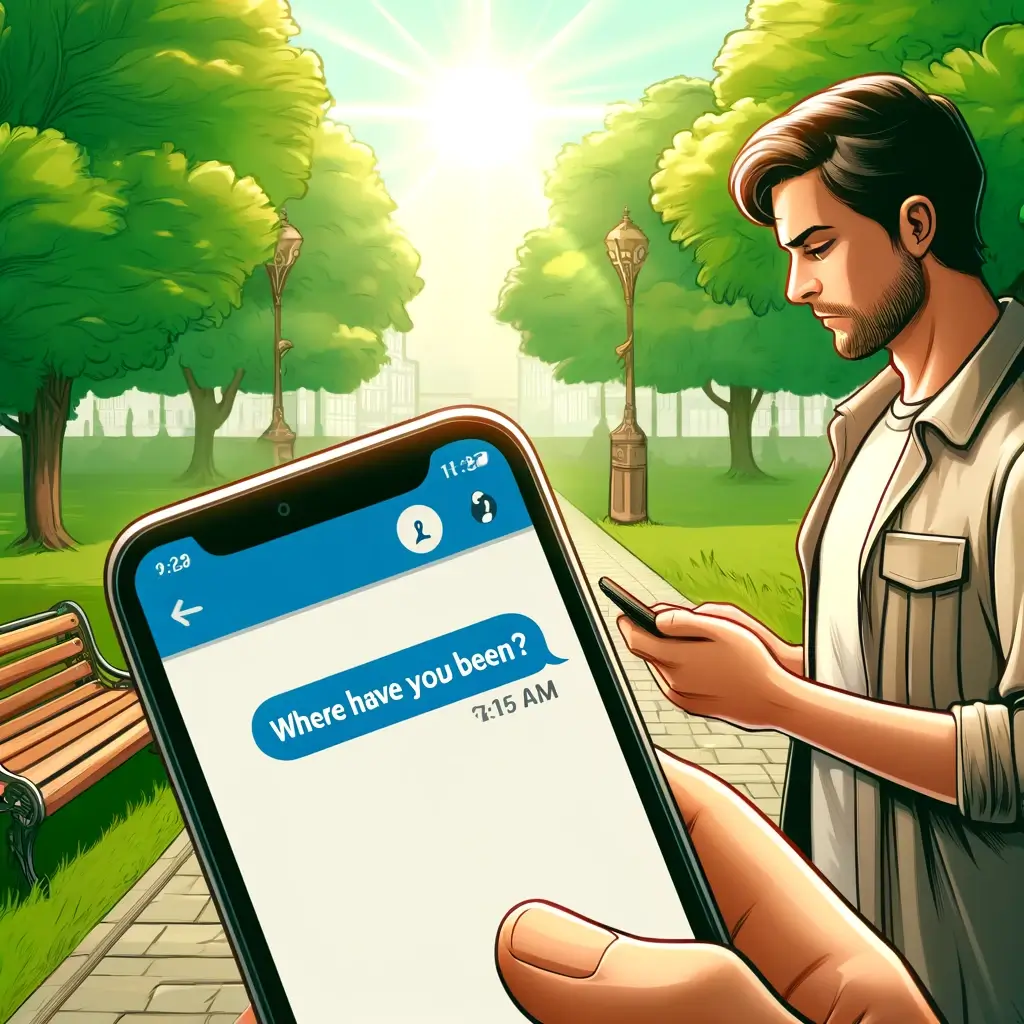
Thank you for your kind words. I’m feeling better already.
A heartfelt response to a “get well soon” message can uplift spirits and strengthen bonds. Expressing genuine gratitude shows appreciation for the person’s concern. Keep your reply short yet sincere, acknowledging their thoughtfulness. A simple thank you paired with a positive update on your health can make a meaningful impact.
Personalize the message to reflect your relationship, whether it’s a close friend, family member, or colleague. This not only conveys your appreciation but also enhances your connection. Remember, a thoughtful response is always valued and can brighten someone’s day. Engaging with those who care about your well-being fosters a sense of community and mutual support.
The Importance Of A Get Well Message
Sending a get-well message shows you care. It lifts the spirits of those who are unwell. A thoughtful message can make a big difference.
Conveying Empathy And Support
Empathy is key in a get-well message. It shows you understand their pain. Use words that show you care. For example, you can say, “I am thinking of you.” This simple phrase shows empathy and support.
Support can be emotional or practical. Offer to help with daily tasks. For example, “I can run errands for you.” This shows you care in a practical way.
Boosting Morale For The Unwell
A get-well message can boost someone’s mood. Positive words bring hope and joy. Say things like, “You are strong and brave.” Such words lift their spirits.
Humor can also help. A funny message brings a smile. For example, “Get well soon, so we can enjoy ice cream together!” Humor makes them feel better.
Encouraging words are powerful. They remind the person they are not alone. Say, “We are here for you.” This simple message provides great comfort.
Choosing The Right Words
Replying to a “Get Well Soon” message can be tricky. You want to express gratitude without sounding overly formal or casual. The right words make a huge difference. Here’s how to strike the perfect balance.
Balancing Warmth And Respect
It’s important to balance warmth with respect. Aim to show genuine appreciation. Use phrases like “Thank you so much for your kind words” or “Your message means a lot to me”. These convey heartfelt gratitude.
Consider the relationship with the sender. For close friends, you can be more informal. For colleagues or acquaintances, keep the tone respectful. Here’s a simple table to guide you:
| Relationship | Suggested Reply |
|---|---|
| Close Friend | Thanks, buddy! Your message cheered me up. |
| Colleague | Thank you for your kind wishes. They mean a lot. |
| Acquaintance | I appreciate your kind words. Thank you. |
Avoiding Common Pitfalls
Some replies can feel insincere or awkward. Avoid clichés like “Thanks, I’ll be fine”. They can sound dismissive. Instead, opt for genuine gratitude.
Stay away from negative language. Don’t say “I feel terrible” or “It’s been awful”. It can make the sender feel bad. Focus on the positive aspects, like recovery and support.
Here’s a quick list of do’s and don’ts:
- Do: Be sincere and grateful.
- Do: Match the tone to the relationship.
- Don’t: Use negative or dismissive language.
- Don’t: Overly detail your illness.
Choosing the right words makes a big difference. Show gratitude while maintaining the right tone. Avoid common pitfalls to ensure your reply is well-received.
Personalizing Your Message
A “Get Well Soon” message can brighten someone’s day. Personalizing your message makes it even more special. It shows you care and have taken the time to think of them. Below are tips to make your message unique and heartfelt.
Reflecting Your Relationship
Think about your relationship with the person. Is it a close friend, a family member, or a colleague? Use words that reflect your bond. For a close friend, you might say:
- “Hey buddy, get well soon! We miss your jokes.”
- “Wishing you a speedy recovery, my dear friend.”
For a colleague, keep it professional yet warm:
- “Wishing you a quick recovery. We need your expertise back!”
- “Get well soon. The office isn’t the same without you.”
Incorporating Personal Anecdotes
Adding a personal touch can make your message more memorable. Share a happy memory or a funny story:
- “Remember our trip to the beach? We need another adventure soon!”
- “Get well soon. We still have that movie marathon to finish!”
If the person enjoys a particular hobby, mention it:
- “Hope you’re back on your feet soon, so we can go hiking again.”
- “Get well soon. The chessboard misses you!”
| Relationship | Message Example |
|---|---|
| Close Friend | “Hey buddy, get well soon! We miss your jokes.” |
| Colleague | “Wishing you a quick recovery. We need your expertise back!” |
| Family Member | “Hope you feel better soon. Family gatherings aren’t the same without you.” |
Creative Ways To Say Get Well Soon
Finding creative ways to say get well soon can brighten someone’s day. A unique message shows you care and lifts their spirits. Below are some engaging ways to send your wishes.
Using Quotes And Poetry
Quotes and poetry add a special touch to your get well soon message. They convey warmth and care in a few beautiful words. Here are some ways to use them:
- Choose a quote that resonates with the person’s situation.
- Write a short poem that reflects your wishes.
- Include a famous line from a poet or writer.
Example:
“The best way out is always through.” – Robert Frost
Such quotes inspire and motivate, making the person feel better.
Humor As Medicine
Humor is a powerful healer. A funny message can bring a smile to their face. Here are some fun ideas:
- Share a light-hearted joke.
- Send a funny meme or GIF.
- Use a playful tone in your message.
Example:
“I heard laughter is the best medicine, so here’s a joke: Why don’t scientists trust atoms? Because they make up everything!”
Injecting humor can make the healing process enjoyable.
Timing And Delivery Methods
Timing and the method of delivering a get well soon message are essential. They reflect your sincerity and thoughtfulness. This section will help you choose the right moment and decide between digital and handwritten notes.
Choosing The Right Moment
Timing can be crucial in sending your get well soon message. Here are some tips:
- Immediate Response: Send a message as soon as you hear the news.
- Follow-Up: Check in again after a few days to show continued care.
- Respect Privacy: Avoid sending messages late at night or early morning.
Digital Vs. Handwritten Notes
Choosing between digital and handwritten notes depends on the situation. Both have their unique advantages:
| Digital Notes | Handwritten Notes |
|---|---|
| Quick Delivery: Instant and perfect for urgent situations. | Personal Touch: Shows extra effort and thoughtfulness. |
| Convenience: Easy to send via email or text. | Tangible Keepsake: Can be cherished and kept by the recipient. |
| Customization: Use emojis and digital cards for added effect. | Unique: Handwriting adds a unique personal touch. |
Both methods are effective, but personal preferences and circumstances may dictate the best choice.
Including A Token Of Care
Receiving a “Get Well Soon” message feels comforting. Responding with a token of care can deepen the bond. Tokens of care show you genuinely care about their well-being.
Gift Ideas That Comfort
Gifts can brighten anyone’s day. Here are some simple yet thoughtful gift ideas:
- Books: A good book can be a great distraction.
- Flowers: Fresh flowers can uplift spirits.
- Comfort foods: Soup, cookies, or tea can be heartwarming.
- Blankets: A cozy blanket provides warmth and comfort.
Making A Care Package
A care package can combine several comforting items. Follow these steps to create a thoughtful care package:
- Select a theme: Choose a theme like relaxation, wellness, or entertainment.
- Gather items: Collect items that fit the theme. For example, include a scented candle, a novel, and herbal tea for a relaxation package.
- Personalize it: Add a handwritten note or a personal touch.
- Package it nicely: Use a box or basket. Decorate it with ribbons or wrapping paper.
- Deliver with care: Hand-deliver it or send it through a reliable service.
Here’s a table of some items you can include in a care package:
| Item | Description |
|---|---|
| Herbal Tea | Calming and soothing beverages. |
| Magazines | Light reading material for entertainment. |
| Essential Oils | For aromatherapy and relaxation. |
| Snacks | Healthy and tasty treats. |
Including a token of care in your response shows genuine empathy. It can make the recipient feel valued and supported.
Respecting Privacy And Boundaries
When someone is ill, it’s important to respect their privacy and boundaries. Respecting their space shows care and understanding. This section will help you understand the importance of giving space and understanding cultural sensitivities.
When To Give Space
Sometimes, people need time alone to heal. Knowing when to give space is crucial. Here are some signs someone needs space:
- They do not respond quickly.
- They seem withdrawn or quiet.
- They ask for some time alone.
If you notice these signs, it’s best to step back. Offer your support without being intrusive. A simple message like, “Take your time. I’m here if you need me,” works well.
Understanding Cultural Sensitivities
Different cultures have different ways of handling illness. Understanding these cultural sensitivities helps you respond appropriately. Here are some tips:
- Research the person’s cultural background.
- Avoid making assumptions about their needs.
- Ask if they have specific customs or practices.
Respecting cultural differences shows empathy and respect. For instance, some cultures value privacy highly. In such cases, a brief, respectful message is best.
Following Up After The Initial Message
After receiving a “Get Well Soon” message, a thoughtful follow-up can strengthen relationships. Here’s how to keep the connection and offer help beyond words.
Keeping The Connection
Staying in touch shows care and concern. It helps the ill person feel valued. Here are a few ways to keep the connection:
- Send a Card: A handwritten card feels personal.
- Check-in Calls: A quick call can brighten their day.
- Text Messages: Send regular texts to show you care.
Offering Help Beyond Words
Actions speak louder than words. Offering help can make a big difference. Here are some practical ways to assist:
| Type of Help | Description |
|---|---|
| Meal Prep | Cook or deliver meals to ease their burden. |
| Running Errands | Offer to pick up groceries or medicines. |
| Household Chores | Help with cleaning or laundry tasks. |
By keeping the connection and offering help beyond words, you show genuine care. These actions can significantly uplift someone during recovery.
Frequently Asked Questions
How Do You Respond To A Get Well Message?
Thank you for your kind message. I appreciate your support and well wishes. I’m feeling better each day.
How Do You Say Thank You To Get Well Soon?
Thank you for your kind get well soon wishes. Your support means a lot to me.
How To Respond When Someone Wishes You Well?
Respond with a warm “Thank you!” Or “I appreciate it!” You can also say, “Thanks, same to you!”
How Do You Respond To Take Care?
You can respond with “You too,” “Thanks, you too,” or “Take care!” All are polite and friendly replies.
Conclusion
Responding to “Get Well Soon” messages can be simple and heartfelt. Express gratitude and show genuine appreciation. Tailor your response based on your relationship with the sender. Use these tips to create meaningful and personal replies. Remember, a sincere message can strengthen your bond and bring positivity.

